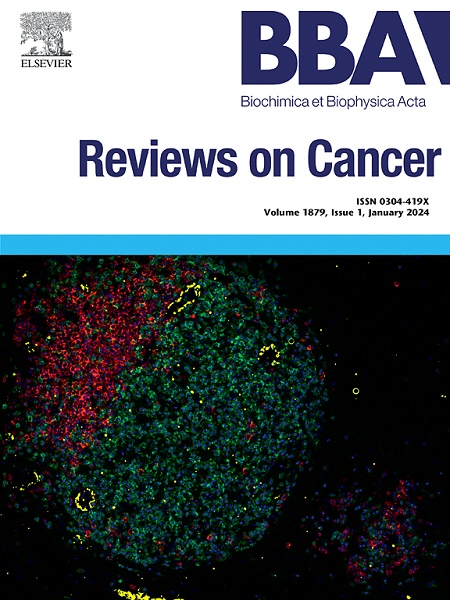Advancing cancer therapy: Mechanisms, efficacy, and limitations of calcium electroporation
IF 9.7
1区 医学
Q1 BIOCHEMISTRY & MOLECULAR BIOLOGY
Biochimica et biophysica acta. Reviews on cancer
Pub Date : 2025-04-11
DOI:10.1016/j.bbcan.2025.189319
引用次数: 0
Abstract
Calcium electroporation, an innovative technique, uses high-voltage pulses to introduce calcium ions into cells, leading to cell death and tumor growth inhibition. This review explores the potential of calcium electroporation as a promising therapeutic approach in cancer treatment. We provide an in-depth analysis of the underlying mechanisms by which calcium ions function within cells and how their introduction through electroporation can effectively induce cell death in cancer cells. Furthermore, we present a comprehensive overview of the current literature, covering both preclinical and clinical studies, to highlight the safety and efficacy of calcium electroporation in various cancer types, including melanoma, head and neck cancer, and breast cancer. We also discuss the distinct advantages of calcium electroporation over traditional cancer therapies, such as its specific targeting of cancer cells while sparing healthy cells. However, we also address the challenges and limitations associated with this technique, underscoring the need for further research. By providing a comprehensive examination of calcium electroporation, this review aims to contribute to understanding this emerging field and encourage further investigation into its potential as a novel cancer treatment strategy.
推进癌症治疗:钙电穿孔的机制、疗效和局限性
钙电穿孔是一种创新技术,利用高压脉冲将钙离子引入细胞,导致细胞死亡和肿瘤生长抑制。这篇综述探讨了钙电穿孔作为一种有前途的癌症治疗方法的潜力。我们深入分析了钙离子在细胞内起作用的潜在机制,以及钙离子如何通过电穿孔引入癌细胞有效诱导细胞死亡。此外,我们对目前的文献进行了全面的综述,包括临床前和临床研究,以强调钙电穿孔治疗各种癌症类型的安全性和有效性,包括黑色素瘤、头颈癌和乳腺癌。我们还讨论了钙电穿孔相对于传统癌症治疗的独特优势,例如它在保留健康细胞的同时特异性靶向癌细胞。然而,我们也解决了与该技术相关的挑战和局限性,强调了进一步研究的必要性。通过对钙电穿孔的全面研究,本综述旨在促进对这一新兴领域的理解,并鼓励进一步研究其作为一种新的癌症治疗策略的潜力。
本文章由计算机程序翻译,如有差异,请以英文原文为准。
求助全文
约1分钟内获得全文
求助全文
来源期刊

Biochimica et biophysica acta. Reviews on cancer
医学-生化与分子生物学
CiteScore
17.20
自引率
0.00%
发文量
138
审稿时长
33 days
期刊介绍:
Biochimica et Biophysica Acta (BBA) - Reviews on Cancer encompasses the entirety of cancer biology and biochemistry, emphasizing oncogenes and tumor suppressor genes, growth-related cell cycle control signaling, carcinogenesis mechanisms, cell transformation, immunologic control mechanisms, genetics of human (mammalian) cancer, control of cell proliferation, genetic and molecular control of organismic development, rational anti-tumor drug design. It publishes mini-reviews and full reviews.
 求助内容:
求助内容: 应助结果提醒方式:
应助结果提醒方式:


